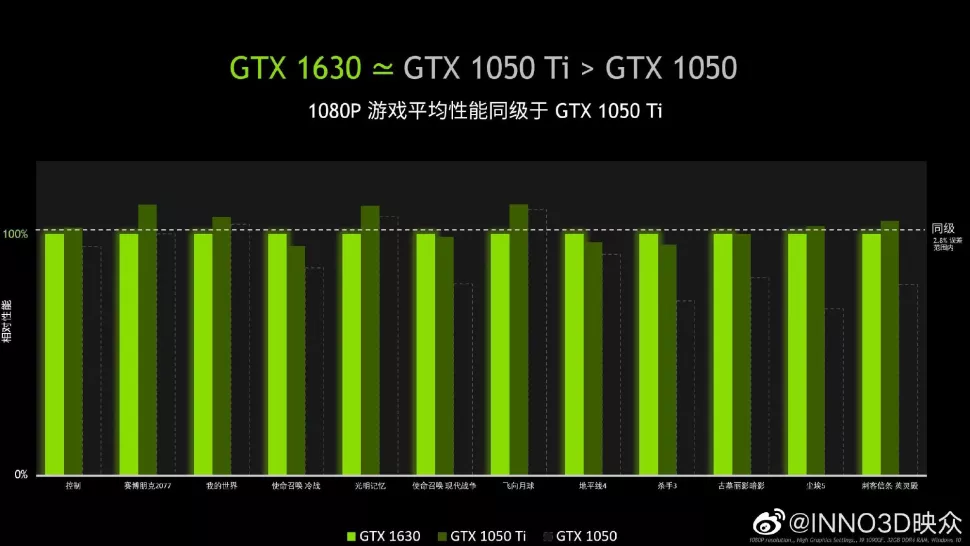According to a Weibo post by Inno3D, the new Nvidia GeForce GTX 1630 is a surprisingly slow gaming GPU, with new benchmarks showing performance parity with the entry-level GTX 1050 Ti from six years ago. This places the GTX 1630 among the slowest GPUs currently on the market, assuming Inno3D’s tests are representative of the majority of games and suggests that it may be little more than a GTX 1050 Ti that has been updated with newer video encoders and decoders thanks to the more recent Turing architecture.
In 2016, Nvidia announced the GTX 1050 Ti, an entry-level gaming GPU built on the Pascal architecture. The 1050 Ti has 768 CUDA cores running on a 128-bit memory bus and 4GB of GDDR5 memory. The reference model’s power consumption peaked at 75W with base clock frequencies starting at 1290MHz and boost frequencies reaching 1392MHz.
But even in 2016, we weren’t completely satisfied with how it did. Given its starting price of $130, the 1050 Ti fared poorly when compared to the basic GTX 1050 in our initial assessment.
The most current entry-level Nvidia GeForce GPU, the GTX 1630, is the first GTX GPU to ever receive the xx30 series logo

This GPU has 512 CUDA cores in total, as may be expected, and uses 4GB of GDDR6 (12Gbps) memory on a small 64-bit bus. In comparison to the GTX 1650, it has fewer memory bandwidth channels. Fortunately, clock rates have risen over 1650, with a boost clock of 1,785 MHz compared to 1,590 MHz on 1650, to make up for the lower specifications.
Inno3D presented a benchmark comparison of the GTX 1630, GTX 1050 Ti, and GTX 1050 in 12 games. These games include well-known AAA ones such as Cyberpunk 2077, Control, Call of Duty Cold War, Assasins Creed Valhalla, Forza Horizon 4, and New World.
The GTX 1050 Ti and GTX 1630 virtually had comparable performance, with the GTX 1050 Ti performing significantly worse in most games. Despite a few instances, the GTX 1050 TI and even 1050 outperformed the GTX 1630 in three of the twelve games.
The GTX 1630’s multi-media capabilities with support for VP8 and H.265 codecs is its lone redeeming grace. Additionally, it includes a significantly more modern NVENC encoder for recording games or even screen captures from your monitor, something that cannot be stated for the RX 6400, which is completely devoid of H264 encoding.
Also Read: Samsung launches its Gaming TV-Hub for its 2022 Smart TVs and Monitors








